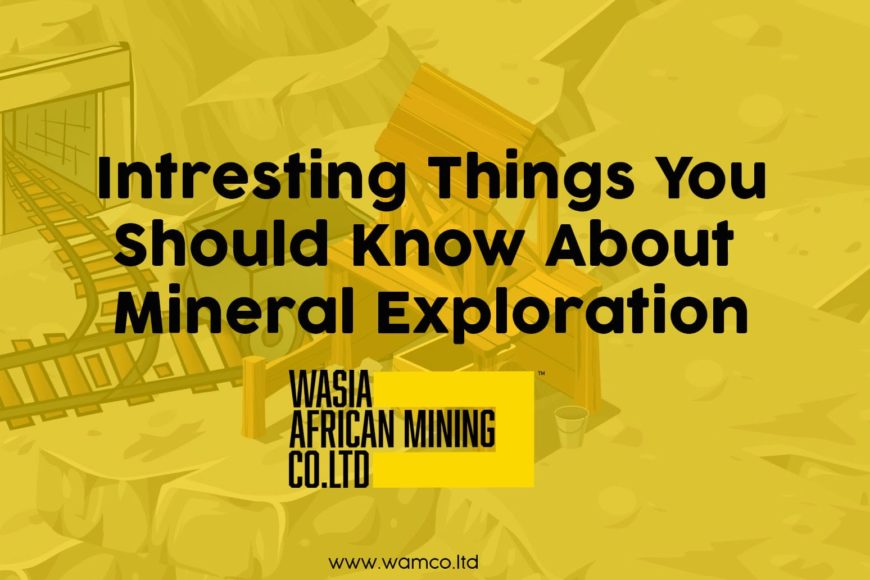
Interesting things about mineral exploration – Humans have been able to maximize the usage of lots of solid minerals right from inception. They have been used as precious ornaments, materials for machinery, a critical component for electricity generation, and in other sectors like medicine and technology. But have we ever thought about the processes involved and the people behind the exploration of minerals? All these are questions this article intends to answer. Before we begin, what does mineral exploration mean?
Swapan K. Haldar (an exploration expert and academician) viewed mineral exploration as a complete set of activities ranging from the search for a mineral prospect, the evaluation of the property for economic mining and the actual extraction of the minerals. While the aforementioned is usually executed by mining companies, the activity is mostly funded by investors, corporations, entities with vested interests or the mining company itself.
Mineral exploration can be broken into six stages, they are:
The Identification of Prospective grounds:
This stage is often carried out by Geologists. Mineral exploration starts with a survey of potential sites that could be identified as a mineral deposit. It is worthy to note that
project classification for minerals is of two types; greenfield and brownfield.
Greenfield is considered to be the most hazardous. This is because no prior work had been done on the field. Brownfield, on the other hand, is the most preferred because previous works have been done at close propinquity to the mining site.
Plan and commence low impact exploration:
The most well-known kinds of low impact exploration activities include intelligence activity work to:
- have more information on the geology
- assess the environmental state
- ascertain the best ways to approach the location
- converse with landowners
The steps involved in this stage include:
- Visual Inspection: This is executed by geologists to determine the site’s prospects for minerals.
- Geological Inspection: This entails the mapping of the location to identify an important landmark.
- Rock Chip Sampling: Here, 1-3kg of the rock of interest is taken for assay by the geologists. This is done to ascertain the presence of minerals in them.
- Soil and Stream Sampling: 250g of stream sediments are retrieved and sent to the lab for assay to also identify if minerals are present in the area.
- Geophysical Surveys (excluding seismic): parameters such as density, magnetic, conductivity, radio-logical properties are measured for spatial studies.
Advance exploration:
Advanced exploration involves:
- Definition drilling and bulk sampling: This entails the collection of numerous and large rock sampling for further testing.
- Project development design: At this stage, stakeholders start designing the extraction procedure. It also involves discussions with the local communities.
- Environmental studies: While the environment is being studied, animal migration (especially the rare ones), water quality and flow, etc. are identified.
To have a baseline understanding of what the project area’s environment contains, water, soil composition and plant life in the project area are tested before development begins.
Establishment of the mineral’s depth and consultation with the local community:
More intensive studies are carried out at this point. Of course, the site might have the minerals we intend to explore, but is it available in commercial quantity? After the depth has been established, the impact of extraction on the environment will be studied, documented and plans to mitigate it will be drafted.
When the aforementioned has been sorted, the mining company and other stakeholders can now engage the locals (which can include different ethnic groups and community members) for dialogues tuned to ensure peaceful coexistence between the host community and the mining firm.
Obtain the necessary approvals and secure funding:
Although the Nigerian government has been clear about her intention to lure investors into virtually all sectors of her economy, getting the necessary paper works before you commence any physical activity is still very important.
In addition to obtaining the government’s approval, the parties (the communities and other stakeholders) involved must also sign an agreement that states the rights and duties of every member.
Commence mining operations:
After government approval is secured, construction can proceed. It can take several years to complete depending on the scope and location of the project. Until the mineral deposit is mined out; mineral exploration continues during this phase and through production.
Mineral exploration is usually initiated by careful planning and a series of feasibility studies. Without the appropriate knowledge and experience, your search for minerals might be likened to a fruitless expedition. If you will like to know more about mineral exploration and how you can benefit from this never-ending human activity, contact us via any of the options contained on our contact page.
